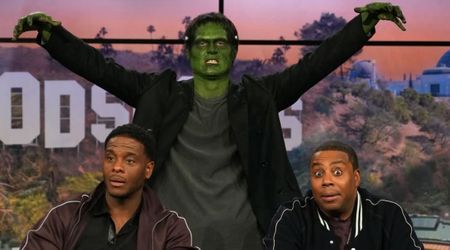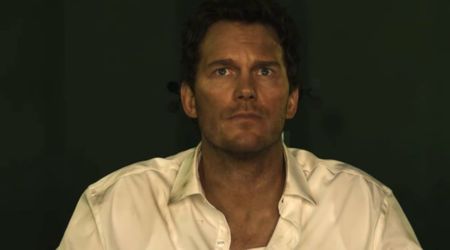'Desert One' Review: Riveting tribute to those involved in the rescue attempt but fails to ask crucial questions

Forty years ago, President Jimmy Carter authorized a military mission to rescue 52 Americans who were taken hostage in late 1979 by Iranian students who supported the Iranian Revolution. The students took over the US Embassy in Tehran and demanded that Shah Mohammad Reza Pahlavi be returned to Iran to stand trial for crimes that he was accused of committing during his reign. After Pahlavi was overthrown in 1979, he flew to the United States to seek treatment for cancer. The United States refused to give in to the demands and the 52 American citizens remained captives for 444 days -- only being released on the day that Ronald Reagan was sworn in as the President.
During the Iranian hostage crisis, Jimmy Carter had come under a lot of criticism for resorting to diplomatic negotiations rather than take military action. Perhaps persuaded by this -- and that he was standing for reelection against Reagan who strongly supported military intervention – Carter approved a special mission known as Operation Eagle Claw, the first mission by the freshly formed counterterrorism unit, Delta Force. The mission was convoluted – it involved flying C-130 aircraft and helicopters to a remote area southeast of Tehran, then refueling the helicopters there which would then head to a mountainous region from where the counterstrike would be launched.
Everything that could go wrong went wrong. The landing area was not as remote as the planning suggested – the military had to take 40 Iranians traveling by bus on a nearby road as hostages to keep the mission on the down-low. Eight helicopters were sent from USS Nimitz which was stationed in the Gulf of Oman, but two helicopters experienced mechanical failure and could not continue. Additionally, a low-level dust storm that was not forecasted severely reduced visibility, leading to the remaining six helicopters landing at Desert One more than 90 minutes late. At the landing zone, another helicopter was deemed unfit for service. Since it was decided that six helicopters were needed for the rescue mission, Carter aborted the mission. Unfortunately, disaster was yet to strike. As forces were leaving and the helicopters were refueling, one collided into a C-130 aircraft, resulting in an explosion that led to the death of eight American servicemen.

'Desert One', a documentary by Academy Award-winning director, Barbara Kopple debuted at the Toronto International Film Festival in 2019 and will be available for rent from August 21. The documentary is from History Channel -- so while you except an in-depth look into the failed mission and what it led to, it only fulfills part of that. Kopple has tracked down former military personnel, American hostages, and even an Iranian who was among the 40 hostages when he was a child, for interviews. Along with these interviews, archival footage, and animation to recreate the failed mission, Kopple puts forward a compelling documentary that is an exploration of the ill-fated mission.
Perhaps, in any other time, it would have worked but given that the Iranian hostage crisis led to some insurmountable changes in America's future, including Reagan's win -- which was largely from Carter's perceived inefficiency in dealing with the diplomatic standoff --, and the economic sanctions imposed on Iran -- we expected much more from 'Desert One'. Yes, the disaster changed the operations of American military force, but in some convoluted way, it can even be seen to influence the very events that the country is embroiled in today, namely Donald Trump trying to reinvoke Reagan's style of "toughness". It even begs the question, why was (and is) a lack of military action perceived to be a sign of weakness?

Why was Carter's intention to solve the crisis without using force not, in fact, applauded? In the decades that followed, the United States' military has been involved in multiple wars -- especially in the Middle East --, ones that have led to crises across the region. Operation Eagle Claw was an embarrassment for the United States -- many of those involved are brought to tears when they remember their fellow servicemen being burned alive in the explosion --, and images of the Iranian forces putting the bodies on display as a show of might would be heartbreaking to many viewers. Those images are not common, not for the United States, yet countries like Iraq and Afghanistan are reeling from America's War on Terror and will continue to do so.
'Desert One' perhaps needed to be more than what was offered. While it offered a tribute to the effort that was made, the documentary failed to acknowledge that the US and Carter granted asylum to a leader who was accused of many crimes against humanity. It also failed to acknowledge the Reagan staff reportedly carrying out their own negotiations with the Iranian hostage-takers behind Carter's back -- after all, many considered it suspicious that the staff members were released minutes after Reagan was sworn in as the President.
'Desert One' will be released in virtual theaters on August 21.










